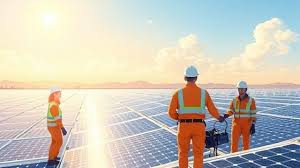Column
Flooding And Environmental Sustainability
Last week, on the 27th of May, 2021, the people of Rivers State celebrated the 54th anniversary of the creation of Rivers State. The state has achieved so much in terms of infrastructure and human capital development. It has achieved good governance and not so much good governance in some dispensations. The present dispensation has given the people more hope to celebrate the dividends of statehood.
However, the common failure of many societies across the globe is the failure to conquer their environment as God commanded. What we see is the ravaging of the environment which has made it more vulnerable to environmental disasters, which include flooding and desertification. Rivers State has 60 percent of its 10,500 square miles and beyond covered by water, and large areas of mangrove and rainforest. Its flora and fauna are of enormous natural resources. The struggle to sustain this God-given environment has been a great task.
The Niger Delta environment has endemic challenges which require scientific and deliberate consciousness of the inhabitants to mitigate. It also requires immediate solutions as the people in the region who are ravaged by flooding cannot wait for medium and long term plans to mature. There is the need to start from what can be dealt with immediately to provide shelter to the people, what can give the people safe home, on dry lands in the face of drowning floods. Enough consciousness has been created to the world at large by the United Nations.
On the 5th day of December, 1972, the United Nations General Assembly through Resolution 2997 in Stockholm, Sweden created the World Environment Day celebration to sensitise all member-nations on the need to ensure environmental safety and sustainability. The environment is the only human habitation known to man. This will remain the case until the superpowers find another solar system habitable.
The UN also has an agency set aside for the monitoring and control of the global environment. The Agency has its full presence in Rivers State. We are aware of the advocacies and direct involvement in Ogoni clean-up.
The problem with environmental sustainability has been the refusal of man to act and act wisely. The people have refused to learn that natural disasters do not consider such ineptitudes as bad environmental habits and lack of conscious disposition to the right relationship between man and his environment which should be that of mutual respect. God in the book of Genesis is reported to have given a Garden to man.
Man unfortunately has turned the Garden into deserts and flood plains. Every nation, including Nigeria, has domesticated all UN regulations by setting up their own agencies to manage and control the environment to make it safe. In Nigeria, all the relevant statutory Agencies on Environment have not been able to provide solutions to natural disasters and environmental degradation. NIMET, an Agency of the Federal Government, has been giving flood alerts since its inception. One thing is to make scientific and precise predictions, another thing is for the relevant institutions, the people concerned and governments at different levels to take the necessary precautions and provide mitigating measures.
In 2012, Nigeria witnessed the worst flood disaster in recent memory. There was a NIMET flood alert, but thousands of people lost lives and homes and property were swept away into Rivers Niger and Benue, in impacted parts of the country. The Niger Delta and Rivers State in particular had its ugly share of the disaster that is better forgotten. But how can one forget such a bitter experience that drowned and swept away the homes and hopes of many in the Orashi region of Ahoada East, Ogba/Egbema/Ndoni and Abua /Odual Local Government Areas of Rivers State, as well as Asari-Toru, Degema, Obio/Akpor and Port Harcourt Local Government Areas. These LGAs are still vulnerable. About 16 LGAs are exposed to this danger in 2021. The 2021 Nigeria Meteorological Agency (NIMET) prediction for 2021 is no less frightening
Like the previous ones, the predictions with the basic highlight of flood and dry spell, fingered states like Benue, Bauchi, Anambra, Adamawa, Bayelsa, Rivers as areas that will experience flash flood. Many states in the North East and North West, according to the prediction, will suffer from Dry Spell which will last up to three weeks or more. The Minister of Aviation, Senator Hadi Sirika, made these declarations while releasing the 2021 Seasonal Climate Prediction at the instance of NIMET in February.
Indeed, February is very early enough to remind all states affected and the Federal Government as well as Local Government Councils to take necessary mitigation measures to reduce effect of the disaster. One interesting thing about meteorological predictions is that they can come early, yet everyone including the impacted communities behave as if all is well. They refuse to heed the call to proceed to higher and safe lands, hoping that the “joke” won’t last forever. The immediate impacted communities are usually adamant to move away from their ancestral homes to safe places. Local Government councils have failed to provide proactive measures to move their people to safety. Flooding is a serious natural disaster that requires a synergy of all stakeholders and government to address, from C.D.C to Federal Government.
Now that we are yet to enter the rainy season, this is the time to begin to work with the relevant agencies to ensure that the damage caused by the previous flood will not repeat itself. Those who are directly impacted must begin to take measures that will reduce their sufferings by moving away from the flash points, no matter what it will cost them. The usual drama of fish and crocodiles swimming in the homes of victims and competing with families and furniture must be avoided. It is advised that previous measures that failed in the past to mitigate flooding should not be repeated. Those concerned must seek new ways of protecting their environments. Land speculators and those seeking accommodation must look for warning signs and avoid flood plains.
Environmental sustainability requires every step to be taken, from the way we generate and dispose our refuse, to policy thrusts. Things must be done in a manner that will not pose any form of danger to human habitation. All forms of disilting of drains and dredging of water channels should be done now before the heavens begin to open for floods. Port Harcourt and Obio/Akpo have many water channels and creeks but many of them have been taken over by land speculators and land lords for cash nexus.
This has been a major source of flooding in the city and other parts of the state where we have perennial flooding. It has therefore become expedient for the authorities to go into action by bulldozing these water rights of way. It takes a strong political will found in the present administration to achieve this. Greed must not be allowed to take prominence over the people’s safety. Flooding in the 16 local government areas listed should not be allowed to become an intractable phenomenon.
By: Bon Woke
Column
Renewable Energy Faces Looming Workforce Crisis

Column
Why Oil Prices Could See Significant Upside Shift

Column
Nuclear Stocks Soar on Stargate AI Infrastructure Announcement
-

 Business3 days ago
Business3 days agoPETAN, Others Unveil ALCO, Get NCDMB’s Support … Mull Synergy With APPO, AU
-

 News3 days ago
News3 days agoNigeria’s Debt To W’Bank IDA Hits $19.2bn -Report
-

 Sports3 days ago
Sports3 days agoNYG:154 Nasarawa Contingent Storms Kwara For Zonal Eliminations
-

 Sports3 days ago
Sports3 days agoNigeria delegation Visits London over 2030 Commonwealth bid
-

 Sports3 days ago
Sports3 days agoD’Tigers flawless finish against Lions in AfroBasket
-

 Business3 days ago
Business3 days agoAON Lifts Ban On Freed Ibom Air Passenger
-

 News3 days ago
News3 days agoChurch Renders Free Medical Outreach, Others To Host Communities
-

 Maritime3 days ago
Maritime3 days agoNCC Announces Telecoms Facilities Protection Measures

